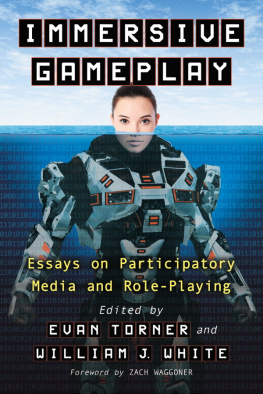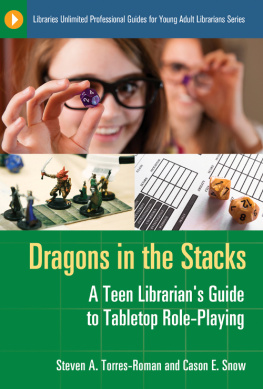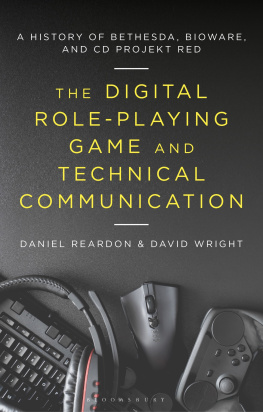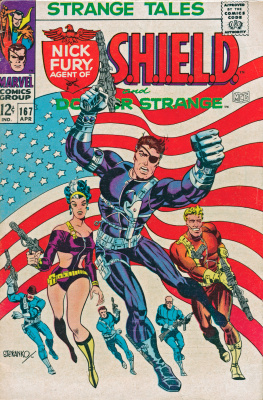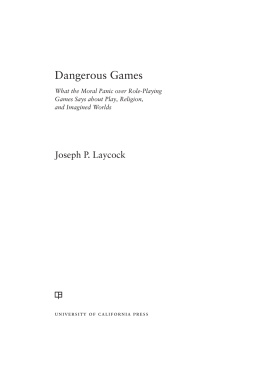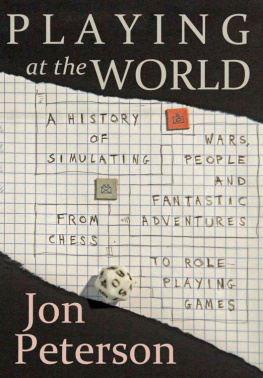
STUDIES IN GAMING
The Play Versus Story Divide in Game Studies: Critical Essays (Matthew Wilhelm Kapell, editor, 2016)
Player and Avatar: The Affective Potential of Videogames (David Owen, 2017)
Responding to Call of Duty: Critical Essays on the Game Franchise (Nate Garrelts, editor, 2017)
Speedrunning: Interviews with the Quickest Gamers (David Snyder, 2017)
Storytelling in Video Games: The Art of the Digital Narrative (Amy M. Green, 2017)
The Postmodern Joy of Role-Playing Games: Agency, Ritual and Meaning in the Medium (Ren Reinhold Schallegger, 2018)
FORTHCOMING IN THE SERIES
The Minds Behind the Games: Interviews with Cult and Classic Video Game Developers (Patrick Hickey, Jr.)
Teach Like a Gamer: Adapting the Instructional Design of Digital Role-Playing Games (Carly Finseth)
THE POSTMODERN JOY OF ROLE-PLAYING GAMES
Agency, Ritual and Meaning in the Medium
Ren Reinhold Schallegger
STUDIES IN GAMING
Series Editor Matthew Wilhelm Kapell

McFarland & Company, Inc., Publishers
Jefferson, North Carolina
LIBRARY OF CONGRESS CATALOGUING DATA ARE AVAILABLE
BRITISH LIBRARY CATALOGUING DATA ARE AVAILABLE
e-ISBN: 978-1-4766-3146-2
2018 Ren Reinhold Schallegger. All rights reserved
No part of this book may be reproduced or transmitted in any form or by any means, electronic or mechanical, including photocopying or recording, or by any information storage and retrieval system, without permission in writing from the publisher.
Front cover images 2018 iStock
McFarland & Company, Inc., Publishers
Box 611, Jefferson, North Carolina 28640
www.mcfarlandpub.com
Preface: Joyful Games of Meaning-Making
Before art, before society, before language even, there was play. This radical claim, emerging from Johan Huizingas Homo Ludens (1938), puts play at the center of cultural development and what it means to be human. If the process of cultural creation and development is taken as the defining feature of humanity, one could rephrase this idea in an ironic, postCartesian way: We play, therefore we are human. What is it then that gives play this immense power over the human mind, over our societies, and our forms of expression? Playing is acting as if, in a sheltered space(time). It happens outside life, but is always at the same time intrinsically connected to it, as the players bring the outside world with them into the magic circle. It is also deeply ironic, in Linda Hutcheons sense (cf. 1995). Pretending, taking on roles, make-believe, these are activities that are all about saying or doing one thing, but meaning another. A doubleness, an ambiguity opens up between life and play, between inside and outside, between the self and the other, truth and non-truth. This conceptual space of circumscribed freedom is the origin of the creative energy produced by play.
Play has accompanied humanity through history, but since the late 20th century, the quality and quantity of its influence on Western culture has changed. Gradually, it has developed into the cultural dominant of European and North-American societies: Gamification is the catchphrase of contemporary cultural and social life, and no longer do games try to be more like life, life is supposed to become more like games (cf. McGonigal, 2011). Like Oscar Wilde, the creator of the original quote, did with the rise of modernist art during the late 19th century, the contemporary observer witnesses massive social and cultural changes linked to the ascendancy of play as the central cultural practice.
The radical political, social and cultural changes World War II inflicted resulted in an initially subtle shift in the perception and construction of reality away from an earlier belief in concepts such as objective truth, the absolute, and the unified self toward subjectivity, the relative, and fragmented identities. The collapse of traditional dichotomies in the ethical and moral chaos of the war shattered certainties, creating an increasing distrust of ideologies that had claimed to be the only true explanation of the world around us. During the late 1960s and early 1970s these diffuse developmentsanalyzed and articulated by French structuralists, deconstructionists and poststructuralists such as Althusser, Barthes, Derrida and Foucaultbecame the center of attention for cultural critics at European and American universities and a new body of criticism and theory emerged that found one of its essential expressions in Lyotards La Condition postmoderne: Rapport sur le savoir of 1979.
Only five years earlier, in 1974, a completely new form of game, a so-called role-playing game, was released by a small private publisher in the U.S.Dungeons and Dragons. By 1978 this obscure storytelling/wargame hybrid had sold enough copies for the companyTSR Hobbies, Inc.to move out of its founders basement and into proper offices, and to be able to afford employees and radio commercials. A new medium was born and soon gathered momentum attracting public awareness so that by 1980 Fortune magazine called it the hottest game in the nation (Fine, 1983: 15). The next twenty years saw a radical increase in the complexity and diversity of role-playing games, and the advent of the computer and the internet as mass technologies led to an extension of the concept into new virtual worlds that today are regularly frequented by millions of players all over the world.
It is this historical coincidence between the slow emergence of postmodern theories and the just as emergent creation of role-playing games (RPGs for short) that constitutes the research interest driving this investigation. There are clear similarities, echoes of the demands leading thinkers and critics of the postmodern had toward traditional literature: opening the text up to interventions by the recipient, talking back to and deconstructing the monological voice of the author and its discursive power, dissolving authorship in a collective and collaborative, a social effort. Bringing art back into life.
Ignorance about and disrespect toward RPGs abounds, even though the medium has grown up and since the early 1990s has openly aspired to the status of a serious art form. Over the years, players have made memorable experiences, have been affected and changed: They develop a keener sense of criticism along with the ability to empathize with others, since they walk in someone elses shoes for a while, thinking their thoughts, living their lives, at the same time never losing the meaningful connection to real life. They also form tightly knit, pseudo-tribal groups, as they get to know each other quite intimately through the production of shared narrative and meaning. The medium can help develop social and mediatory skills necessary to get over rough patches in human relationships. Like the stories, like lifeand this is a connection made by Gary Alan Fine in his landmark study of RPGs (cf. Fine 1983: 8), the group develops and changes. All of this, the personal growth, the growth as a group, the development of critical and mental skills, the continuity and the memories, shows that this medium is extremely powerful in its means to affect peoples lives. If there is a form of cultural expression of such power, how did it come to be and when? And why at this point in cultural history and not decades or centuries earlier, since all it takes to engage in pen and paper role-playing is exactly that: a pen, some paper, and a group of people willing to share a narrative.
Next page


